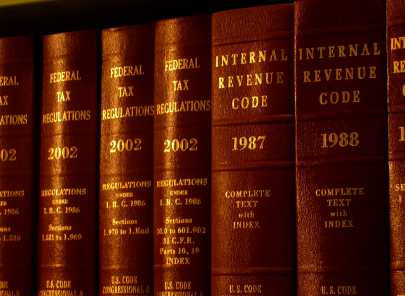 Once upon a time, there was a wonderful change in tax law that favored taxpayers across the US. The R&D tax credit became available to small businesses as the definition of research and development changed; a significant hurdle called the “discovery test” was removed. This change broadened the definition of R&D allowing many to claim they qualified.
Once upon a time, there was a wonderful change in tax law that favored taxpayers across the US. The R&D tax credit became available to small businesses as the definition of research and development changed; a significant hurdle called the “discovery test” was removed. This change broadened the definition of R&D allowing many to claim they qualified.
All was well in the kingdom as taxpayers began to file amended tax returns reaping large refunds claiming R&D tax credits under the new definitions that were retroactive.
Unfortunately, documentation for these claimed refunds was scarce as was the understanding at the IRS of how to audit these claims of refund. Then, as tables turned, in 2007, the IRS elevated the R&D tax credit to Tier 1.
What does this mean?
Let’s take a look.
In 2007, R&D Credit Claims became a Tier 1 issue.
How does an issue become a Tiered issue?
According to the IRS website, an issue is added to the Tiered Issues list when it is determined that the issue may be a high-risk compliance issue (big way of saying taxpayers are trying to take advantage). Depending upon the level of perceived risk, the issue can be labeled as Tier 1, Tier 2 or Tier 3 with Tier 1 being the most severe. The IRS has issued two industry directives relative to Tier 1 status on Research Credit Claims. You can find them by clicking the following links:
Industry Director Directive #1 on Research & Experimentation (R&E) Credit Claims
Industry Director Directive #2 on Research Credit Claims
What does Tier 1 mean as it relates to my R&D tax credit?
If you ask the IRS, they will tell you that Tier 1 issues are “given greater consistency and accountability in the resolution of high-risk compliance issues that cross industry lines.”
If you ask some taxpayers that have been through a Tier 1 audit, they might give a more realistic definition; something like, “the claim was disallowed and we had to prove every penny.”
For a taxpayer that does not have strong supportable documentation that creates nexus between projects and people, the road can be a rocky one. For a company that has strong documentation, going through a Tier 1 Research Credit audit should result in a reasonable outcome. With that said, there are always two sides to an audit and examiners might not see issues in the same way as a taxpayer. Courts have allowed taxpayers to estimate time spent on projects and has directed the IRS to consider estimates if they are based in reasonable and supportable assumptions. The key is the basis of the assumptions and is it reasonable and supportable.
My recommendation?
Use a strong system for tracking time and expenses spent on projects. Online systems such as Titan-Armor are excellent options to implement and have provided the necessary information under IRS audit to successfully secure R&D tax credit claims.
What is the risk my R&D claim will be disallowed under a Tier 1 audit?
Any time a taxpayer files an amended tax return, there is a higher level of review at the IRS before a claim is approved. Whether or not your R&D credit will be disallowed really depends on the documentation available, both substantive and subjective, and the strength and knowledge of the statutes, regulations, and case law applicable to R&D tax credits. Having a CPA or technical expert in your corner that knows the Research Credit and applicable tax law is critical to a favorable outcome.

So what should I do if I am considering harvesting R&D credits from prior years?
Consult a tax professional that is experienced in working with R&D tax credits AND believes in strong documentation processes. While you may believe you should receive the R&D tax credit for your work in creating the next iPhone, unless you have the right records to document those activities, you could find yourself losing the audit battle.
Tier 1 only applies to amended tax returns with new or updated R&D claims; filing for an R&D tax credit on an originally filed tax return does not go through the Tier 1 process.
What are your experiences?
Have you been through a Tier 1 R&D Credit Audit?
What was your experience? Good? Bad? Did you have an adjustment?
Do you have any suggestions for others that may be facing an R&D credit audit?
Randy Eickhoff, CPA is President of Acena Consulting. With more than 20 years of tax and consulting experience, Randy focused on helping companies successfully document and secure tax incentives throughout the US. He has been a long-time speaker nationally as well as conducted numerous training sessions on R&D tax credits and other US tax incentives.






